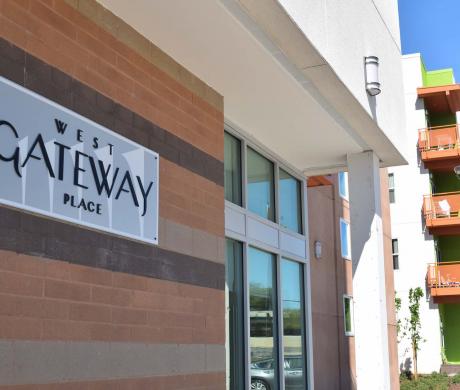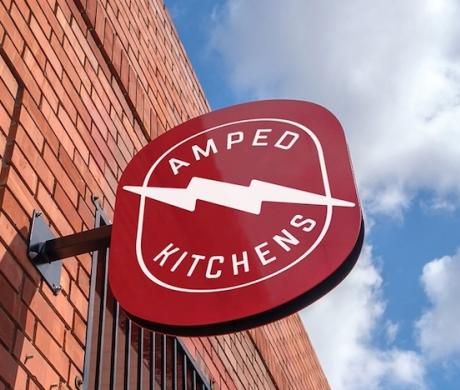City Economic Development in 2019: Resources, Options and Prospects
Dan Carrigg is deputy executive director and legislative director for the League; he can be reached at dcarrigg@cacities.org.
Ten years ago, identifying the major economic development tools available for cities was simple: they consisted of local redevelopment agencies and enterprise zones. Both are gone. Now city officials must sort through smaller puzzle pieces with an array of new programs and acronyms when seeking to address their community’s needs. Nevertheless, resources are available for those with the patience and persistence to understand and use the new tools and funding options.
Existing Funding Resources
SB 1 Transportation Funding (Beall, Chapter 5, Statutes of 2017). After 10 years of work, the League and other key stakeholders helped secure the largest augmentation in transportation funding in decades at $5.2 billion per year, which included doubling the amount that cities receive to fix their streets and roads. In November 2018, voters rejected Prop. 6, which attempted to repeal this funding source. City officials can now put these funds to work on much-needed projects in their communities.
SB 2 Funding for Updating General, Specific and Community Plans (Atkins, Chapter 364, Statutes of 2017). Updated plans are critical both to getting the community on board with your city’s development plans and reducing uncertainty for developers. The problem for many cities, however, is that planning efforts are costly and often take a back seat to public safety and other more urgent priorities. New ongoing funding is now available from SB 2 to help communities update their plans and streamline future development, including housing.
Proposition 68 Park Funds. Cities will receive minimum $200,000 grants to improve local parks from Prop. 68 (a $4 billion parks and water bond approved in June 2018). Several big cities will get larger amounts. Cities are also eligible to apply for over $1 billion in additional funding for parks, safe drinking water, recycling and flood protection.
Prop. 1 Housing Funds. With the elimination of redevelopment in 2011 and no state housing bond since 2006, Prop. 1 — a $4 billion housing bond approved by voters in November 2018 — represents the first infusion of new housing funds in nearly a decade. Gov. Gavin Newsom has committed to expediting the allocation of these funds in 2019. Cities should be partnering now with local developers and nonprofits and prepare to apply for funding to build affordable housing.
Prop. 2 and Emergency Homelessness Housing Funds. Pervasive homelessness undermines local efforts to improve quality of life and attract and retain jobs. Prop. 2, which voters approved in November 2018, authorizes $2 billion to build up to 10,000 housing units with services for homeless individuals with mental illness. Gov. Newsom has committed to expedite the allocation of these funds in 2019. The FY 2018–19 state budget approved $500 million for emergency shelters, and Gov. Newsom’s proposed budget would double that amount. Make sure your city takes advantage of these funds to help people experiencing homelessness get off the streets. Doing so will both assist those in need and improve your local business climate and economic development prospects.
Billions of Dollars in Cap-and-Trade Funding. City officials need to take advantage of the opportunities to access cap-and-trade funds. The state has adopted aggressive greenhouse gas reduction goals that are accompanied by a major funding source derived from private industry purchasing emissions from auctions conducted by the California Air Resources Board. Billions in funding are available annually through the state Strategic Growth Council to fund a variety of local projects. Some cities have been very creative and aggressive in pursuing these funds, but others are not paying sufficient attention to the opportunities. The Institute for Local Government, the League’s nonprofit research affiliate, is focused on helping cities understand how to take advantage of these opportunities. Visit www.ca-ilg.org for more information.
California Competes Tax Credits. This income tax credit is available to businesses that want to locate or stay and grow in California. Tax credit agreements will be negotiated by the Governor’s Office of Business and Economic Development (GO-Biz) and approved by a statutorily created California Competes Tax Credit Committee; $180 million is allocated for these credits in each fiscal year through 2022–23. City officials should become familiar with this program as they work to attract employers and retain high quality jobs.
Film & TV Tax Credits. The California Film Commission allocates $330 million in annual tax credits to attract and retain film production in the state. Additional incentives are provided to productions that film outside Los Angeles. Ensure that your community is positioned to be considered as a location for future film productions.
Federal New Markets Tax Credits. This existing federal program offers tax credits to private investors to incentivize community development and economic growth in distressed communities.
Federal Opportunity Zones. This new program, authorized by the 2017 Federal Tax Reform Act, provides investors relief from capital gains if they make investments for up to 10 years in various low-income census tracts designated by the governors of each state. Gov. Newsom’s budget proposes to offer conforming state tax benefits for investments in green technology or affordable housing projects located in Enhanced Infrastructure Finance Districts.
New Tax-Increment Tools
The elimination of redevelopment was devastating for many communities, and the replacement tools approved by the Legislature and Gov. Jerry Brown, while helpful in some instances, pale in comparison with the former tool. Still, it is worth the effort to learn about them; they offer opportunities for creative city officials.
Enhanced Infrastructure Finance District (EIFD) law (beginning with Section 53398.50 of the California Government Code) is the most popular tool so far. It provides broad authority for local agencies to use tax increment to finance a wide variety of public infrastructure. Private projects can also be financed, including affordable housing, mixed-use development and sustainable development, industrial structures, and facilities to house consumer goods and services. No public vote is required to establish an authority, and though a 55 percent vote is required to issue bonds (which Gov. Newsom has proposed in his budget to eliminate), other financing alternatives exist.
There are some benefits to EIFDs. Unlike former redevelopment, the EIFD imposes no geographic limitations on where it can be used and requires no blight findings. An EIFD can be used on a single street, in a neighborhood or throughout an entire city. It can also cross jurisdictional boundaries and involve multiple cities and a county. Property tax that cities receive from former redevelopment agencies and property tax received by cities in lieu of former Vehicle License Fee funds can be also dedicated to an EIFD and used with fewer legal restrictions than apply to city financing. Though a city can form an EIFD without participation from other local governments, the flexibility of this tool and the enhanced financial capacity created by partnerships will likely generate creative discussions among local agencies on how the tool can be used to fund common priorities. Recent changes allow sales tax to be used, but with many conditions and limitations.
Community Revitalization and Investment Authorities (CRIAs) law (beginning with Section 62000 of the California Government Code) gives these authorities all the former powers of redevelopment agencies — including eminent domain for redevelopment purposes. A CRIA focuses on assisting with the revitalization of poorer neighborhoods and former military bases. While similar to redevelopment, establishing a CRIA is more streamlined. Some restrictive accountability measures were included to ensure that the use of the CRIA remains consistent with community priorities — but these will likely need to be modified by the Legislature to make the tool more useful. A 25 percent set-aside is included for affordable housing. Although an initial protest opportunity exists, no public vote is required to establish a CRIA, and bonds and other debt can be issued without a public vote after a CRIA is established.
Affordable Housing Authority (AHA) financing law (beginning with Section 62250 of the California Government Code) is a new statute that authorizes a city or county to create by resolution an affordable housing authority (coterminous with its boundaries) with various powers and to dedicate a portion of its property tax increment, sales tax and other revenues to develop affordable housing (up to 120 percent of area median income). This is a very flexible law for cities seeking to establish an ongoing funding mechanism for affordable housing. An AHA may:
- Issue bonds;
- Borrow;
- Receive funds from and coordinate with other entities;
- Remove hazardous substances;
- Provide seismic retrofits;
- Loan funds to owners and tenants to repair, improve or rehabilitate buildings in the plan area; and
- Take other actions.
The AHA has broad property acquisition and disposal authority. Creating an AHA or bond issuance does not require a public vote.
Annexation Development Plan (ADP) law (Section 99.3 of the California Revenue and Taxation Code) authorizes consenting local agencies (a city and/or a county or special district) to adopt tax-increment financing to improve or upgrade structures, roads, sewer or water facilities or other infrastructure as part of annexing a disadvantaged unincorporated community. An ADP can be implemented by a special district either formed for this purpose or incorporated into the duties of an existing special district. After the Local Agency Formation Commission (LAFCO) approves the annexation, the special district can issue debt without an additional vote.
Seaport Infrastructure Financing Districts (SIPDs) law (Section 1710, Harbors and Navigation Code of California) establishes a financing tool for seaport infrastructure based on a modified form of the EIFD law.
Infrastructure and Revitalization Financing Districts for Former Military Bases (IRFDs) law (beginning with Section 53369 of the California Government Code) creates infrastructure and revitalization financing districts separate and apart from existing law that established infrastructure financing districts, authorizes a military base reuse authority to form a district and allows these districts to finance a broader range of projects and facilities.
Key Funding Proposals in Gov. Newsom’s Proposed Budget
Gov. Newsom proposed additional funding for affordable housing programs, homelessness and community planning and development. The Legislature is currently reviewing the details of these proposals and will likely alter some aspects prior to the adoption of the final budget by July 1. The proposed funding includes:
- $500 million annually in low-income housing tax credits;
- $500 million to the California Housing Finance Agency for moderate-income housing production;
- $500 million for homeless emergency shelters and environmental streamlining for construction;
- $250 million for updating local plans to accommodate additional housing allocations, and $500 million in rewards for local agencies that achieve “milestones” yet to be defined; and
- Identifying Caltrans property that can be used for homeless housing and allowing demonstration housing developments on excess state property.
Legislative Economic Development Proposals
It is too early to predict the outcomes of the 2019 legislative session; however, the League encourages city officials to support and track the following bills:
- SB 5 (Beall, McGuire) seeks to restore more robust and ongoing financing for community development, transit-oriented development, affordable housing and other priorities via a state approval process to enable the dedication of additional bondable property-tax streams to help local agencies finance large community development projects;
- AB 11 (Chiu) seeks to re-establish a community redevelopment tool;
- SB 128 (Beall) removes the existing 55 percent vote requirement from EIFD bond issuance and may be a vehicle for additional changes;
- AB 1259 (Luz Rivas) seeks to establish a California New Markets Tax Credit with the goal of attracting additional investments from the federal program to the state; and
- ACA 1 (Aguiar-Curry) would reduce the local vote threshold for proposed local bonds and taxes to invest in infrastructure and affordable housing from two-thirds to 55 percent.
Next Steps
The League encourages city officials to learn more about the funding opportunities and tools listed here that are currently available or soon may be — and to continue supporting the League’s efforts to increase options and resources available for city community development.
For more information, visit www.cacities.org/Policy-Advocacy/Hot-Issues
This article appears in the May 2019 issue of Western City
Did you like what you read here? Subscribe to Western City







